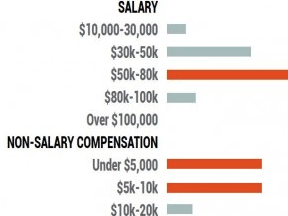A “conversion funnel” describes a consumer’s path to purchase, when awareness develops into interest, interest develops into desire, and then the transaction occurs.
When it comes to ecommerce, this path may take multiple exposures across a variety of sources to capture consumer awareness. Further, once the consumer is interested, he will likely research across multiple third-party sites. For an ecommerce merchant to truly understand the impact of its marketing efforts, it has to be able to fully track and attribute sales.
Which Affiliate Is Responsible for the Sale?
In July, the Performance Marketing Association released a whitepaper that examined attribution options provided by various affiliate networks. In it, AvantLink, a Utah-based affiliate network, says that of its tracked transactions, one in six are associated with multiple affiliates.
Another network, North Carolina-based LinkConnector, found that approximately 11 percent of its tracked transactions involve multiple affiliates. Impact Radius, based in Santa Barbara, analyzed nearly 2 billion affiliate conversions, and found that within the affiliate channel, 9 percent of all credited conversions involved at least one other affiliate. However, when this data was expanded to include all marketing channels, not just affiliate marketing, 13 percent of conversions came from multiple sources.
These statistics demonstrate not only the influence of affiliates, but also the frequency in which consumers consult multiple sources before committing to a transaction.
Attribution Methods
Most retailers have their own attribution strategy. Some will say that every touch point leading to a transaction is equally important. Others will weigh the touch points based on ad spend. Regardless of the approach, many affiliate networks now offer the ability to customize attribution rules within that network and, in some cases, across all marketing channels.
CAKE, a marketing agency, provides its clients with four attribution models: linear, time-decay, position-based, and custom. With linear attribution, a transaction is equally split among all touch points. With time-decay, more weight is given to the most recent touch point prior to the transaction. With position-based attribution, greater weight is assigned to the first and last touch points involved in a transaction. And with custom attribution, the retailer can layer in additional engagement factors such as page views, or amount of time spent on the site. These levers can be assigned just to the affiliate channel, or the retailer can use the solution across multiple marketing channels.

CAKE provides its clients with four attribution models: linear, time-decay, position-based, and custom.
LinkConnector, an affiliate marketing network, offers multiple attribution models as well.
First, with shopping cart disqualification, retailers can disqualify an affiliate from receiving commission if the affiliate enters the clickstream after the customer begins the checkout process. This way, the retailer will not have to pay commission to a coupon affiliate when the consumer pauses the checkout process to locate a coupon or discount code.
Second, using coupon code attribution any transaction that occurs using a specific coupon code could be attributed to an affiliate. This enables a retailer to tie transactions to affiliates engaging in offline marketing activities such as distributing a coupon code via newspaper or radio ads.
Third, with fixed margin attribution, advertisers can pay a variable commission based on the value of any coupon used by the consumer. So, if a consumer completes a purchase without using a coupon, the affiliate could receive a 10-percent commission. If the consumer completed the purchase using a 10-percent off coupon, the affiliate would then receive, say, a 5-percent commission.
Fourth, cross-platform tracking enables attribution across multiple browsers and devices. If a consumer starts her shopping journey on a smartphone, but completes the purchase on a laptop, the entire path can be correctly tracked and attributed.
Add-to-cart and Other Events
Another platform included in the PMA’s whitepaper is ShareASale, a Chicago-based affiliate network. ShareASale offers retailers the ability to layer individual marketing channels, and to incorporate events such as add-to-cart, influencers, or other occasions.
The solution, called Conversion Lines, recognizes that transactions associated with coupon and loyalty sites often carry a higher average order, because consumers will often add items to a cart when they realize that they’re receiving a discount. ShareASale Conversion Lines enables retailers to pay affiliate commissions on the portion of the order that was brought in after the initial add-to-cart event.
Beyond Affiliate Marketing
Cadence Essential, from Rakuten Marketing, is an omnichannel attribution platform that provides transparency into all digital marketing investments, including paid search, email, social, and display, in addition to affiliate. By understanding how each touch point influences a shopper, Cadence Essential enables the retailer to provide a customized, cross-channel experience to every individual consumer.
The platform measures not just how often a sequence of touch points results in a purchase, but how often that same sequence ends without a purchase. And this insight enables retailers to compare successes and failures, and invest their ad budgets accordingly.
In short, every retailer is likely to have a unique approach to attribution. There is no single, blanket solution. However, no matter the approach, there is likely technology that can track it — within the affiliate channel or spanning multiple channels.




